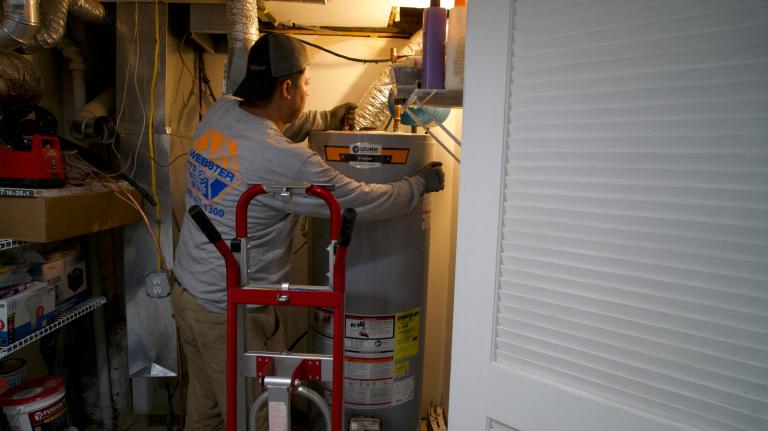Cross-posted from Climate Progress. This post was coauthored by Valeri Vasquez, special assistant for energy policy at the Center for American Progress, and Christina C. DiPasquale, an associate drector for press relations at the Center for American Progress.
Today, the Senate Committee on Environment and Public Works convenes a hearing on “The Clean Air Act and Public Health” to discuss the Environmental Protection Agency’s proposal to reduce mercury, lead, and other toxic air pollution from power plants. One of the witnesses will be Cathy S. Woollums, senior vice president of MidAmerican Energy. She will reiterate recent statements by other big polluting utilities — including American Electric Power — and threaten rate hikes and job losses if the proposed power plant health safeguards become final.
MidAmerican is owned by Warren Buffett’s Berkshire Hathaway Inc. In 2005, the utility was the sixth largest coal-fired electricity generator in the United States. MidAmerican’s power plants produce large amounts of toxic pollution. A Center for American Progress analysis of 2009 Toxics Release Inventory data (the latest available) found that MidAmerican’s power plants in Arizona, Colorado, Iowa, Utah, and Wyoming spewed a total of nearly 7,000 pounds of lead and mercury into the air we breathe and put our children’s lives and health at risk [click here for spreadsheet]. These and other toxics are known to cause neurological, developmental, and respiratory harm.
MidAmerican Energy’s 2009 toxics by the pound:
- 1.8 million pounds of acid gases emitted, which the American Lung Association reports trigger “irritation to skin, eye, nose throat, [and] breathing passages.”
- 4,063 pounds of lead emitted, which affects kidney function, the nervous system, immune system, reproductive and development systems, as well as the cardiovascular system and oxygen carrying capacity of the blood, according to the EPA.
- 2,689 pounds of mercury emitted, which harm vital organs and brain function, according to Physicians for Social Responsibility
Woollums’ prepared written testimony [PDF] says that MidAmerican “began planning emission control projects targeting … mercury emissions prior to 2005.” Yet despite this six year head start, MidAmerican asserts that it will still face hardship under EPA’s proposed safeguards. It threatens rate increases and jobs losses if EPA finalizes its proposed airborne toxic chemical reduction standards on time. Woollums writes:
MidAmerican, like many utilities, is concerned about the costs and timetables for the implementation of these EPA rules.
If the timetable of the rules remains unchanged, compliance costs will be shouldered by our customers in the form of higher rates … These increases will dramatically increase production costs for industrial plants and could result in job losses.
Actually, many utilities support EPA’s proposed limits on toxic and cancer-causing chemicals from power plants. A half dozen major utilities acknowledge that they have had ample time to install pollution controls. They also believe that the proposed air toxics reductions from coal-fired utilities are affordable. CEOs from Exelon, PG&E, Calpine, NextEra Energy, Public Service Enterprise Group, Constellation Energy Group, and others wrote in The Wall Street Journal that:
For over a decade, companies have recognized that the industry would need to install controls to comply with the act’s air toxicity requirements, and the technology exists to cost effectively control such emissions, including mercury and acid gases.
Contrary to the claims that the EPA’s agenda will have negative economic consequences, our companies’ experience complying with air quality regulations demonstrates that regulations can yield important economic benefits, including job creation, while maintaining reliability.
Michael J. Bradley, the executive director of the Clean Energy Group — a coalition of major utilities — testified [PDF] before EPA last month that:
The Clean Air Act provides sufficient time to comply as well as the authority to accommodate special circumstances where additional time is necessary.
Woollums’ prepared written statement complains about the “multitude of environmental requirements the electric industry faces over the next several years.” It even includes a version of the so-called “regulatory train wreck” graphic prepared by big utilities and debunked by the World Resources Institute [PDF].
A just-released report by the Economic Policy Institute, a nonprofit Washington D.C. think tank, debunks MidAmerican’s claims about job losses, and instead determined that the EPA air toxics rule is “a lifesaver, not a job killer.” Josh Bivens, a senior macroeconomist, analyzed data from Bureau of Labor Statistics, the Census of Construction, and the EPA to conclude that:
Claims that this regulation destroys jobs are flat wrong: the jobs-impact of the rule will be modest, but it will be positive.
[It] will likely lead to the creation of 28,000 to 158,000 jobs between now and 2015.
The capital investments made in order to bring power plants into compliance with new rules spur multiplier effects, and may well represent net new spending in an economy where both businesses and households are extremely reluctant to make new purchases.
This is in addition to the “monetized” value of the rule’s public health benefits, which when estimated in 2010 dollars will “amount to $55-146 billion per year, dramatically exceeding the $11.3 billion annual cost of [implementing] the program.”
Despite MidAmerican’s testimony, this hearing is on the Clean Air Act and public health, not Clean Air delays and private profit. Companies like MidAmerican that argue for delaying these rules ignore the urgent need to protect families from real health hazards. In these tough economic times, companies shouldn’t force Americans to choose between their kids and their jobs by threatening unemployment if forced to clean up. Hopefully, the members of the Senate Environment Committee will ignore MidAmerican’s familiar pleadings by a big polluter, and instead allow EPA to finalize and implement reductions in air
toxic pollution from utilities 21 years after Congress gave EPA the authority to do so.




